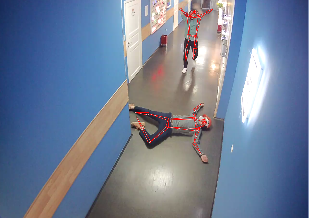Recommendations on characteristics for choosing the cameras:
- Minimal resolution is 2 MP.
- Matrix size not less than 1/2.8".
- Possibility of shutter speed control (at least, values 1/2 ~ 1/1000 are required). Moving objects have to be clearly visible.
- The less distortion of the lens and of the picture - the better. The detection quality on distorted areas are worse.
- The more light sensitive will be the matrix - the better. If it is planned to use the detector at the night time - consider FTC cameras.
- Varifocal lens, with at least x3 optical zoom.
- Fisheye cameras are not appropriate.
- RWDR 120 dB (camera hardware WDR).
- Onvif-compliance (at least S).
Recommendations on camera settings:
- Camera bitrate has to be sufficient for required resolution, FPS and motion intensity. The camera picture has to be stable, without noise and glitches.
- Codec has to be H.264.
- Disable OSD text on camera if possible.
- Consider using only RWDR if WDR is required.
Factors other than camera characteristics and settings, affecting the Wear Detector performance:
- The lighting in the scene of detection. The lighting in the scene has to be sufficient and evenly distributed.
- The positioning of the camera. The most appropriate vertical angle for the installation is 30 degrees - deviations from might cause the unstable work of the detector.
- Topview angle will not work.
- Make a camera set up considering that objects and people might obscure each other - in that case the detector will not work efficiently.
Examples of good angles and image quality:
